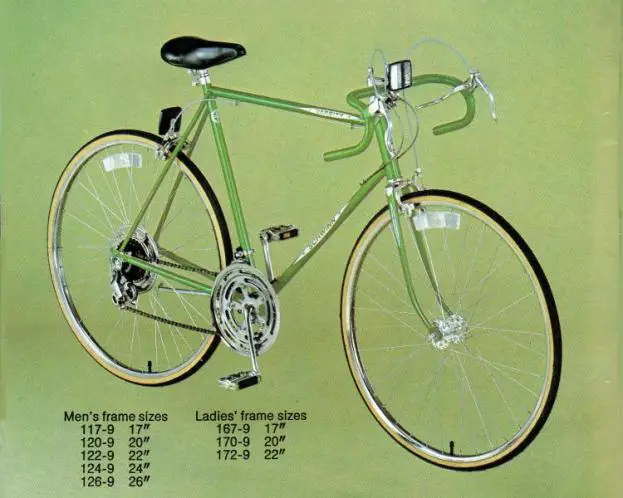
The Paramount was developed for track and road racing by Emil Wastyn, a 6 day racing frame builder, mechanic and Schwinn dealer in Chicago, who immigrated from Belgium. For details, see our article about 26-inch tire sizes. 597 mm) interchanges with the British 26 x 1 1/4, not the British 26 x 1 3/8 (I. The most common difficulty is that the Schwinn 26 x 1 3/8 (I.

Let the tire buyer beware! There are similar problems with other Schwinn tire sizes. The rim/tire diameter is also slightly different. 571 mm) is not interchangeable with any normal tire of similar width, although its bead circumference is the same as the "650C" size used on some high performance 26" wheel bicycles.ĭesignating the width with a fraction instead of a decimal usually signifies a straight-sided rim, not a hook-edge rim. 559 mm size used on most mountain bikes the 26 x 1 3/4 (I.S.O.


You might think that these are the same, but they are not. For example, most "middleweight" Schwinns take 26 x 1 3/4 tires, which are hard to find, not 26 x 1.75 as used on other brands. Good mathematics doesn't always help you when it comes to bicycle tires. S.-made Schwinns take oddball Schwinn size tires, with the exception of 630 mm/27 inch, which is standard. Schwinn also built a factory in Greenville, Mississippi, but it didn't last, and even bought a factory in Hungary, but the deal fell through, and Schwinn never imported any Hungarian bikes to the U.S. Unfortunately, the realities of the marketplace didn't agree, and Schwinn closed the factory, transferring most production to Japan (Panasonic) and Taiwan (Giant). Sometime in the 1970's, the Schwinn Chicago factory was organized by the United Auto Workers union, who felt that bicycle factory workers should be paid on the same scale as automotive workers. Parts that say "Schwinn Approved" were made elsewhere to Schwinn's specifications. The parts that say "Schwinn" were made by Schwinn in their enormous Chicago factory (which I had the pleasure of touring in the early '70's). These rims, like the Chicago frames, were among the sturdiest ever built. They also manufactured their own rims in the Chicago factory, the "Schwinn Tubular Rim". Older Schwinn " cruisers", such as the Excelsior that was the inspiration of the first mountain bikes, used a straight lower top tube from the bottom of the head tube to the seat tube. If I recall, it was what Schwinn called a " cantilever" frame, where the seat stays pass by the seat cluster and continue on in a graceful curve to join the bottom of the head tube. The Typhoon probably dates from the late '50's or '60's. NEW! Mike Rother has an excellent overview of the fillet-brazed lightweights, also on this site. Muller has a very detailed explanation of this process, in his superb article: Inside the Varsity, which is now on this site. There are necked-down parts that fit into the top tube and down tube, like internal lugs. The head tube and the tapered segments that lead into the the top tube and down tube were actually made from two special forgings that were "electro-forged" (welded) together down the centerline, then ground smooth, so the seam is not usually visible. The head tubes look as if they were fillet brazed, but they weren't.

With the exception of the Sports Tourer, Super Sport, and Superior, they are welded, not brazed. The Chicago Schwinns were among the most bomb-resistant bikes ever built, and they were built with unique technology.


 0 kommentar(er)
0 kommentar(er)
